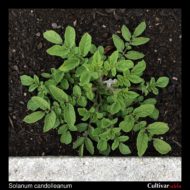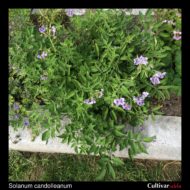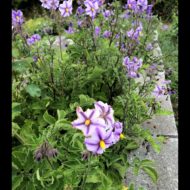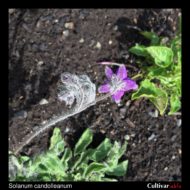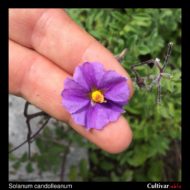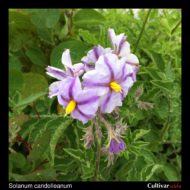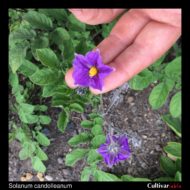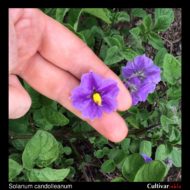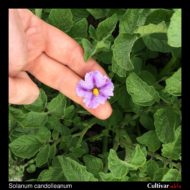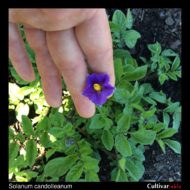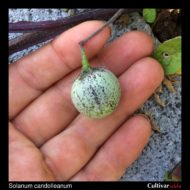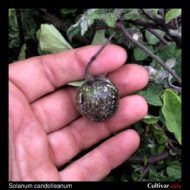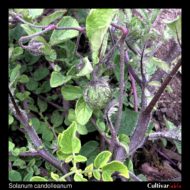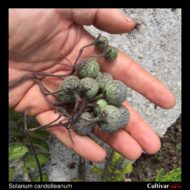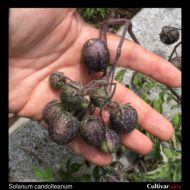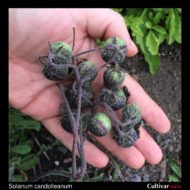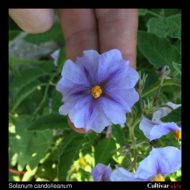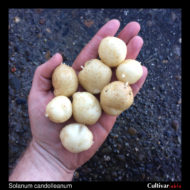No products in the cart.
Solanum candolleanum
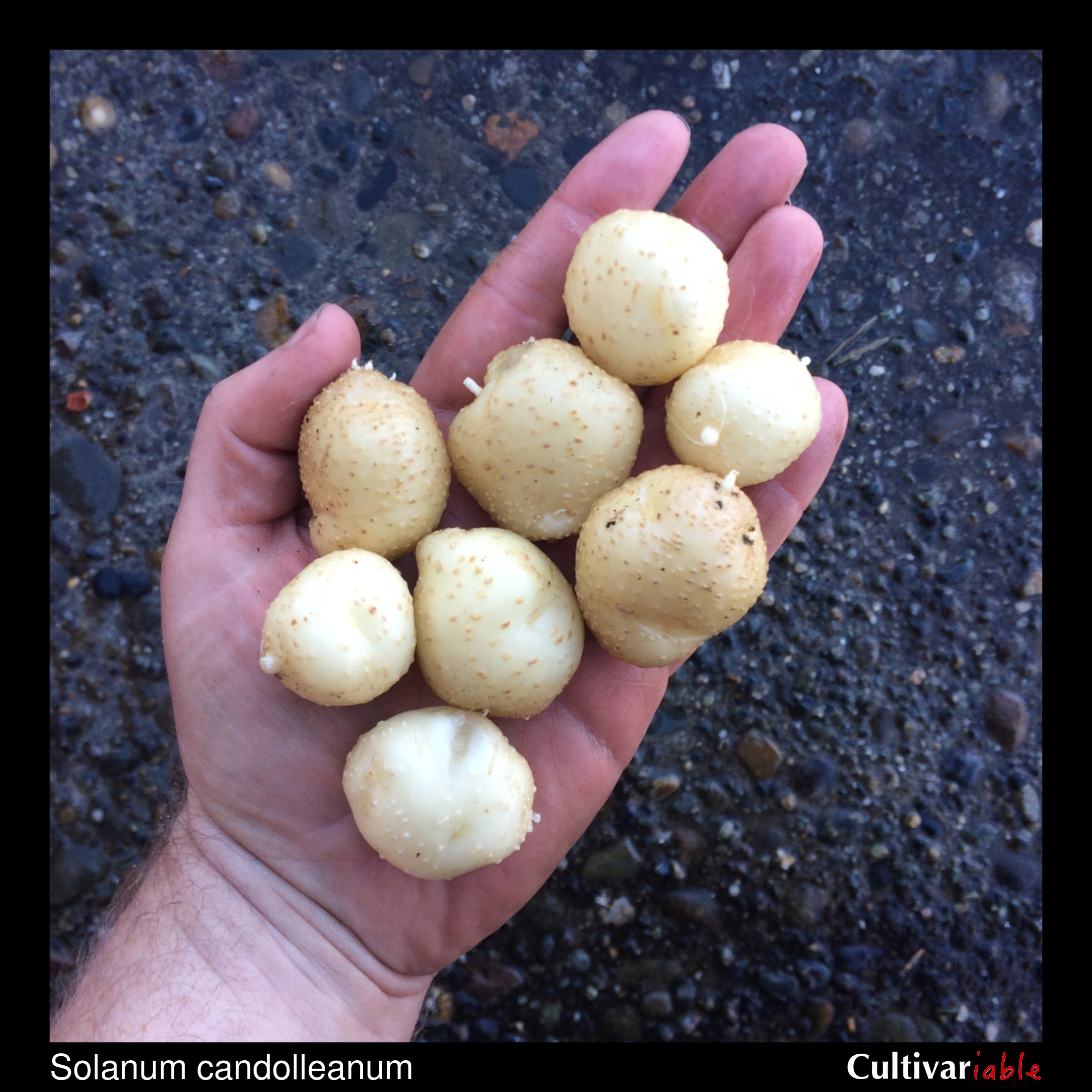
| Common Names | Achachil ch’ogue, Monte ch’ogue, Papa abuelo |
| Code | cnd |
| Synonyms | S. abancayense, S. abbottianum, S. achacachense, S. amabile, S, amayanum, S. ambosinum, S. ancoripae, S. antacochense, S. aymaraesense, S. bill-hookeri, S. bukasovii, S. calcense, S. canasense, S. catarthrum, S. chillonanum, S. coelestipetalum, S. hapalosum, S. huancavelicae, S. lechnoviczii, S. lobbianum, S. longiusculum, S. marinasense, S. mollepujroense, S. multidissectum, S. neohawkesii, S. ochoae, S. orophilum, S. ortegae, S. pampasense, S. puchupuchense, S. pumilum, S. punoense, S. sarasarae, S. sawyeri, S. saxatile, S. sicuanum, S. soukupii, S. sparsipilum, S. tapojense, S. tarapatanum, S. tenellum, S. velardei |
| Clade | 4 |
| Series | Tuberosa |
| Ploidy | Diploid (2x), Triploid (3x) |
| EBN | 2 |
| Tuberization Photoperiod | Short Day |
| Self-compatibility | No |
| Nuclear Genome | A |
| Cytoplasmic Genome | M, P |
| Citation | Berthault: Ann. Sci. Agron. Franc. Etrangere, ser. 3, 6: 190. 1911. |
Description
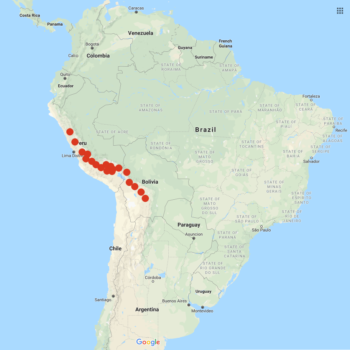
Solanum candolleanum is wild potato species native to Peru and Bolivia. Plants are fairly large, as much as three feet tall, although this is quite a variable species. Stolons reach almost five feet. Tubers are generally small, but can be among the largest of any of the wild potatoes, reaching up to about five inches long or more under cultivation. Flowers blue to purple. Berries round to ovoid and similar in size to domesticated potato. Grows in cool, moist environments up to about the 13,100 foot elevation.
The specific epithet, candolleanum, honors Swiss botanist Augustin Pyramus de Candolle, who established both our current system of plant classification and the genus Solanum. While there is no completely standardized pronunciation for scientific names, the most common way to pronounce this species is probably so-LAY-num KAN-dol-ee-ah-num. If disregarding the original pronunciation of names or native words, you might instead use the pronunciation kan-dol-ee-AH-num.
S. candolleanum and S. brevicaule are the core members of the Solanum brevicaule complex, which ranges from northern Peru through Bolivia. S. candolleanum is the dominant species in the northern part of that range and S. brevicaule is in the southern part. Both species are highly variable, but overall similar to one another. Both share a lot of similarities with the domesticated potato and can cross relatively easily with it, at least at the diploid level.
Resistances
This species can survive frosts down to 24 degrees F (-4.5 C) (Li 1977, as S. canasense). Vega (1995) found that this species is more frost tolerant than domesticated potato.
| Condition | Type | Level of Resistance | Source |
|---|---|---|---|
| Drought | Abiotic | Somewhat resistant | Machida-Hirano 2015, Watanabe 2011 (as S. chillonanum) |
| Frost | Abiotic | Somewhat resistant | Machida-Hirano 2015 |
| Globodera pallida (Pale Cyst Nematode) | Invertebrate | Somewhat resistant | Castelli 2003 |
| Globodera pallida (Pale Cyst Nematode) | Invertebrate | Somewhat resistant | Bachmann-Pfabe 2019 (under various synonyms |
| Globodera rostochiensis (Potato Cyst/Golden Nematode) | Invertebrate | Resistant | Castelli 2003 |
| Leptinotarsa decemlineata (Colorado Potato Beetle) | Invertebrate | Somewhat resistant | Machida-Hirano 2015 |
| Meloidogyne spp. (Root Knot Nematode) | Invertebrate | Somewhat resistant | Machida-Hirano 2015 |
| Myzus persicae (Green Peach Aphid) | Invertebrate | Somewhat resistant | Machida-Hirano 2015 |
| Pectobacterium carotovorum (Blackleg/Soft Rot) | Bacteria | Somewhat resistant | Chung 2011 (as S. bukasovii) |
| Phytophthora infestans (Late Blight) | Fungus | Not resistant | Gonzales 2002 |
| Phytophthora infestans (Late Blight) | Fungus | Somewhat resistant | Bachmann-Pfabe 2019 (under various synonyms) |
| Potato Leaf Roll Virus (PLRV) | Virus | Somewhat resistant | Machida-Hirano 2015 (as S. bukasovii) |
| Potato Virus Y (PVY) | Virus | Somewhat resistant | Chung 2011, Machida-Hirano 2015 |
| Potato Virus Y (PVY), C Strain | Virus | Resistant | Takacs 1999 (as S. achacachense) |
| Streptomyces scabiei (Scab) | Bacterium | Somewhat resistant | Machida-Hirano 2015 (as S. bukasovii) |
| Synchytrium endobioticum (Wart) | Fungus | Somewhat resistant | Machida-Hirano 2015 |
Glykoalkaloid content
Johns (1990) found glycoalkaloid levels ranging from mostly from 25 to 78mg/100g in four accessions of S. candolleanum (as S. bukasovii and S. canasense). They also noted an outlier at 9mg/100g (PI 473492). Some have levels are just above the safety limit for S. tuberosum at 20mg/100g and those are probably safe to eat in small amounts. Some varieties may even be as safe as S. tuberosum if the 9mg/100g outlier is any indication. The primary glycoalkaloids found were solanine and chaconine. Van Gelder (1988) found TGA levels ranging from 70 to 92 mg / 100 g (as S. bukasovii), 32 to 36 mg / 100 g (as S. canasense), and 36 mg / 100 g (as S. multidissectum).
Images
Cultivation
The USDA Potato Genebank has observed that some accessions of this species are dependent upon GA3 for germination (Bamberg 1999). Bamberg (2018) found that alternating temperatures increased germination in this species.
Breeding
Crosses with S. tuberosum
| Female | Male | Berry Set |
Seed Set | Germ | Ploidy | Source |
|---|---|---|---|---|---|---|
| S. candolleanum (inlcuding many synonyms) | S. tuberosum 4x | Minimal | Minimal | Jackson (1999) | ||
| S. tuberosum 4x | S. candolleanum (including many synonyms) | Low | Minimal | Jackson (1999) | ||
Crosses with other species
Jackson (1999) found 3-12% 2n pollen for varieties of this species.
| Female | Male | Berry Set |
Seed Set | Germ | Ploidy | Source |
|---|---|---|---|---|---|---|
| S. candolleanum | S. acaule | High | High | Ochoa 1990 | ||
| S. candolleanum | S. berthaultii (as S. litusinum) | Moderate | Moderate | Ochoa 1990 | ||
| S. candolleanum | S. brevicaule | Moderate | Moderate | Ochoa 1990 | ||
| S. candolleanum | S. boliviense | Moderate | Moderate | Ochoa 1990 | ||
| S. candolleanum | S. infundibuliforme | Moderate | Moderate | Ochoa 1990 | ||
| S. candolleanum | S. lignicaule | No? | No | Ochoa 1990 | ||
| S. candolleanum | S. microdontum | Yes? | No | Ochoa 1990 | ||
| S. candolleanum | S. raphanifolium | High | High | Ochoa 1990 | ||
| S. candolleanum | S. stipuloideum (as S. circaefolium) | No? | No | Ochoa 1990 | ||
| S. boliviense (as S. megistacrolobum) | S. candolleanum | Yes? | No | Ochoa 1990 |
References
Solanum candolleanum at Solanaceae Source

